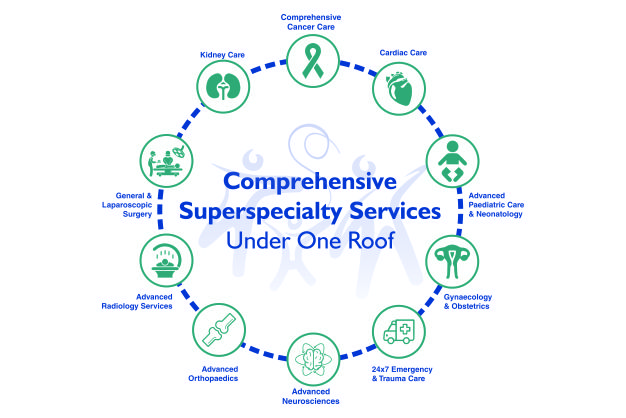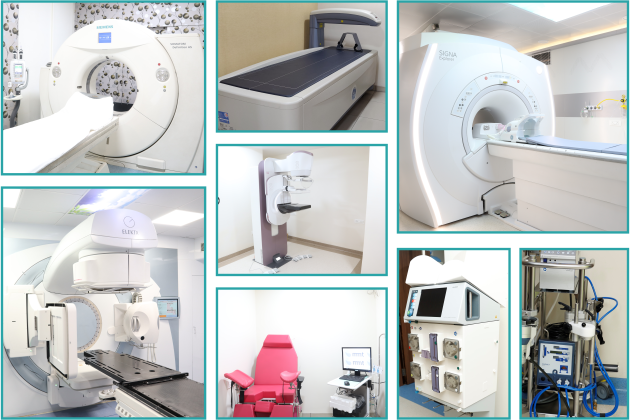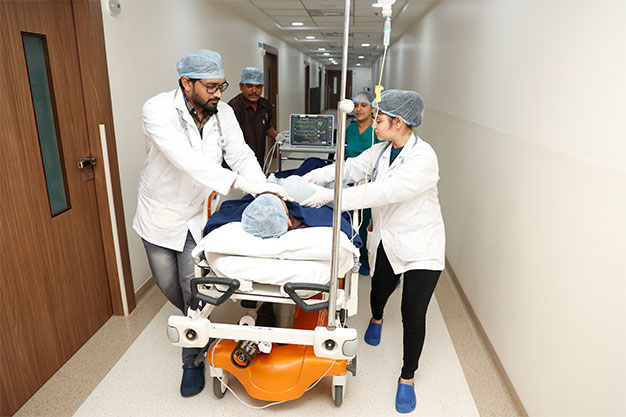.png)
DATE : 28/04/2025
AUTHOR : AIMS Hospital
More than millions have had his life turned around, joint disease torment and arthritis were invented at the help of other orthopedic disorders; joint replacement surgery has truly changed their lives. While they have been effective until late, the emergence of robotic-assisted technology has given an exceptional face to joint replacement-another degree of precision, recoveries, and patient outcome benefits.
Understanding Robotic Joint Replacement
So precisely customized, robotic joint replacement can combine human skills by surgeon high-end robotic systems, and definitely, it can provide more applicants for each patient. The preoperative imaging, as in CT scans or X-rays, translates that into a three-dimensional model of the joint formed by the robotic system. This model allows the surgeon to plan the surgery and execute it with an accuracy unattainable through manual methods.
During surgery, a robotic arm assists the surgeon while removing the damaged bone and placing the implant accurately. While the robotic does all of this, it's important to remember that the surgeon remains completely in control of the entire procedure holding the technology just as a tool for better outcomes.
Precision is Now Defined in a Different Way
Robotic joint replacement has benefits in the field of joints: that is, accuracy without limits. This technology minimizes the risk of errors thanks to real-time feedback during surgery. It ensures that the implant is perfectly aligned with the individual anatomy of the patient.
Proper alignment is critical to extending the longevity of the joint implants. Even a slight misalignment creates uneven wear of the implant, introduces instability, and ultimately results in revision surgery. Robotic-assisted procedures, through optimizing alignment, further improve the longevity of the implant, thereby providing patients with long-lasting relief and improving their quality of life
Faster Recovery and Reduced Pain
Faster Recovery and Reduced Pain: compared to other techniques, robotic joint replacement introduces a lesser degree of invasiveness and is likely to result in smaller cuts involving current limbs and minor collation of adjacent soft tissue. It follows:
- Reduction of postoperative pain: The involvement to the surrounding soft tissues by robotic surgery is so minimal that this will cause less postoperative pain.
- A reduced chance for complications: Robotic systems present surgical errors or damage to normal structures at the minimum.
- Reduced postoperative inpatient status: The majority of patients return to their routine almost immediately compared to the traditional joint replacement procedure.
Faster recovery equals reduced hospital days, reduced health care expenditure, and speedier restoration of mobility and independence.
Superior Outcomes
Robotic technology even sets up the new norms for successful joint replacement. Patients reporting robotic joint replacement will have:
- Better-Joint Function In terms of improved implant positioning.
- Patients experience less pain and can move better to engage in activities that appeal to them.
- Robotic procedures are more precise and consistent, there tend to be fewer complications and a better overall experience.
Traditional Surgery vs. Robotic Joint Replacement
When traditional or conventional joint replacement has been considered a reliable method for decades, it can be interpreted as subjective and, to some extent, dependent on the skills and judgment of the surgeon, allowing room for human error. On the contrary, robotic systems should be an addition to the capabilities of the surgeon and offer detailed anatomical information that aids the execution of extraordinarily precise procedures.
Without doubt, traditional methods will still be applicable or serve their purpose in some cases, particularly in the absence of robotic technology or where there are cost constraints. Robotic joint replacement, however, gives a significant advantage in accuracy and results for most eligible patients.
Who is Suitable for Robotic Joint Replacement?
Robotic joint replacement should suit the following individuals:
- Patients suffering from serious arthritis or joint destruction.
- People who wish to heal faster and achieve better operatively results in the long term.
- Those who fear compromise on implant longevity and alignment.
However, it is always recommended to consult an orthopedic specialist to check if this method fits your case.
Conclusion
Robotic joint replacement is indeed a groundbreaking advancement in Orthopedics. The combination of advanced technology and surgical expertise leads to unparalleled precision, shorter recovery periods, and better patient outcomes. At AIMS Hospital, we are proud to bring this cutting-edge innovation to those seeking relief from joint pain and a return to active living. Whether you are considering knee, hip, or any joint replacement, our robotic procedures ensure you receive the very best care, tailored to your unique needs.
ABOUT US
About AIMSDirector's Message
Vision & Mission
Accreditations
Awards & Accolades
Our Network
Phone Directory
Designed by Web Creations 2022. All rights reserved.










